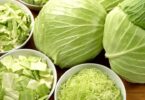Here are all the steps you need to take when dehydrating cauliflower at home.
Cauliflower, cabbage, and broccoli belong to the same genus, Brassica. These are staples in many household pantries. Molds, bacteria, and microorganisms may grow on fresh fruits and vegetables if they are not used immediately upon buying or if they are not safely stored. There are many different ways to prevent bacteria from growing on food and one of them is dehydrating or drying them.
Dehydrating cauliflower is one of the methods of preserving vegetables that you can do on your own. You can use dried cauliflower in a variety of ways, including:
- as a rice substitute,
- as cauliflower mash,
- powdered and added to meals for increased nutrition, and
- as a cauliflower pizza base.
Different cauliflower varieties
When buying cauliflower for dehydration, look for those with firm heads with no brown or soft yellow spots that you can see on the surface. When you get home, make sure you soak the cauliflower, head side down, in cold salted water. Leave it there for about 15 minutes. This helps get rid of harmful pesticides or any insects inside.
The edible part of the vegetable is the head of flower buds, which is called the curd. It grows from the center of the plant. It is surrounded by green stemmed leaves.
Cauliflowers have to be harvested just before the buds begin to open. There are different kinds of cauliflower:
- White cauliflower – is the most common, curds are pure white. Varieties include white cloud, snowball, and early white hybrid.
- Orange cauliflower – has bright orange curds because it contains increased amounts of the orange pigment, beta-carotene, about 25 times more than what is present in white cauliflower.
- Purple cauliflower – produce vibrant purple curds. Once cooked, the graffiti variety retains its purple color, while the other variety called purple of Sicily turns green.
- Roman cauliflower – has lime green, cone-shaped curds. Its nutty taste is similar to the taste of broccoli.
Dehydrating cauliflower is an excellent way to preserve this nutritious vegetable. It contains phytochemicals like ascorbic acid, tocopherols, and carotenoids, which are good antioxidants. Cauliflower is rich in vitamin C, protein, thiamine, riboflavin, magnesium, niacin, phosphorus, and vitamin K.
It is also a good source of vitamin B6, fiber, potassium, manganese, and pantothenic acid. It also has choline which is good for memory function.
Dehydrating Cauliflower – Steps You Need to Take
1. Selecting cauliflowers for dehydration
Choose cauliflowers at peak quality and flavor. Never use a cauliflower showing signs of bruising, mold, or decay.
12 pounds of cauliflower yield about 1 ¼ to 1 ½ pound of dried cauliflower (or approximately 12 to 15 pints).
You need ice to cool cauliflower slices after blanching.
You may add 1 teaspoon citric acid per gallon of water for blanching. (Optional)
2. Equipment
Dehydrator or oven with drying racks or trays to allow good air circulation.
Conditioning containers – large plastic or glass containers with lid.
Storage containers – plastic freezer bags, dry canning jars, or plastic freezer containers with tight-fitting lids.
Large pot with cover for blanching.
Metal blanching basket, mesh bag, or cheesecloth.
Strainer, colander, or slotted spoon.
Knife, cutting board, and timer.
3. Preparing the cauliflower
Blanching cauliflower is recommended to enhance safety and quality. Blanching is a good way of improving the color and texture of the vegetable. It relaxes the tissues so that the pieces of cauliflower will dry faster, thus reducing the time you need to rehydrate them.
- Wash the cauliflower thoroughly.
- Trim and cut into small pieces (florets).
- Fill your pot with 1 gallon of water and bring to a boil. You may add citric acid to the water if you wish. This is a good anti-microbial agent.
- Put no more than 4 cups of sliced cauliflower into the blanching basket or mesh bag or cheesecloth (secure the ends).
- Lower the cauliflower into the boiling water. It is important that the vegetable is fully submerged in water. Blanch for 3 to 5 minutes.
- Set your timer as soon as the water boils. It is important to monitor heat.
- Remove the cauliflower from the boiling water and transfer to a large bowl of ice. This will stop the cooking action. Remember not to cool to room temperature.
- Drain the blanched cauliflower on a paper towel or soft cloth.
Repeat the process until the entire cauliflower batch has been blanched and cooled.
Here is an easy-to-follow guide on blanching cauliflower.
4. Dehydrating cauliflower
Arrange the cauliflower on drying trays or racks in single layers. Making sure there is enough space in between to allow air circulation.
Set the dehydrator or oven at 140°F or 60°C.
If needed, turn the large pieces over every 4 hours to ensure even drying. In general, vegetables scorch easily as the drying process ends. It is important to closely monitor the oven as the drying process near completion. The end product should be tough to brittle.
The total dehydrating time is between 12 to 15 hours if you use a dehydrator. If you don’t have a dehydrator and you’ll be using a conventional oven, the process may take longer.
SEE ALSO: A Guide for Beginners: How to Dehydrate Food with a Dehydrator
5. Condition the dried cauliflower
It is important to condition the dried cauliflower. Loosely put the cooled cauliflower in a large glass or plastic containers. Fill the containers up to about 2/3 full.
Cover and store in a dry and well-ventilated place for 4 to 10 days.
Shake the containers or stir the contents every day to ensure the pieces are separated.
If you notice beads of moisture forming inside the container, repeat the drying process, and then repeat the conditioning process.
6. Storing dried cauliflower
Use moisture-vapor-proof containers or bags to serve as storage for small amounts of conditioned dried cauliflower pieces.
Make sure to label the packages with the name of the product, the date of drying, and the method of pretreatment and drying.
The containers should be stored in a cool, dry place, like the refrigerator or the freezer. If safely stored, dried cauliflower may last from 6 to 12 months. Discard dried cauliflower that show signs of mold or have a foul odor.
SEE ALSO: How to Store Dried Vegetables
Using Dehydrated Cauliflower
You can eat them “as is” like a snack or as part of your meal. The addition of dried cauliflower to your soups and stews directly is one the simplest way to rehydrate the vegetables.
SEE ALSO: Cauliflower Popcorn Recipe





